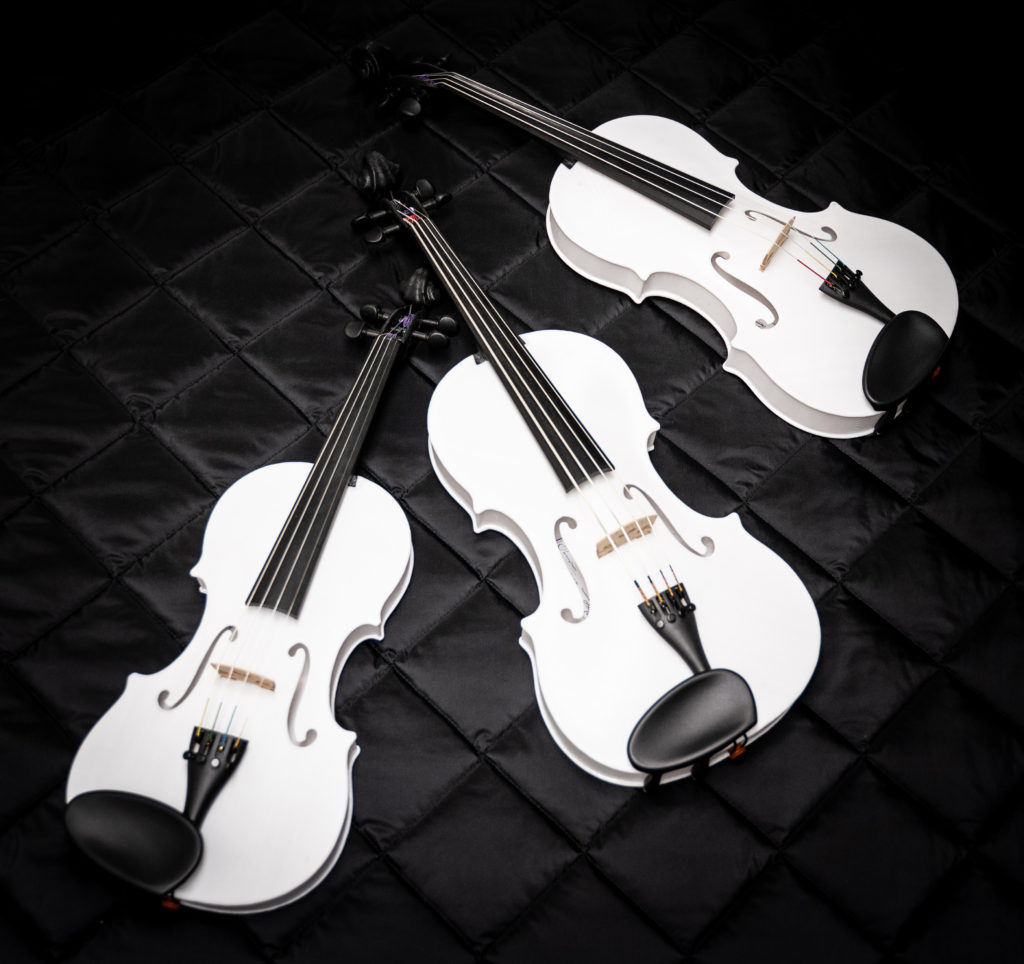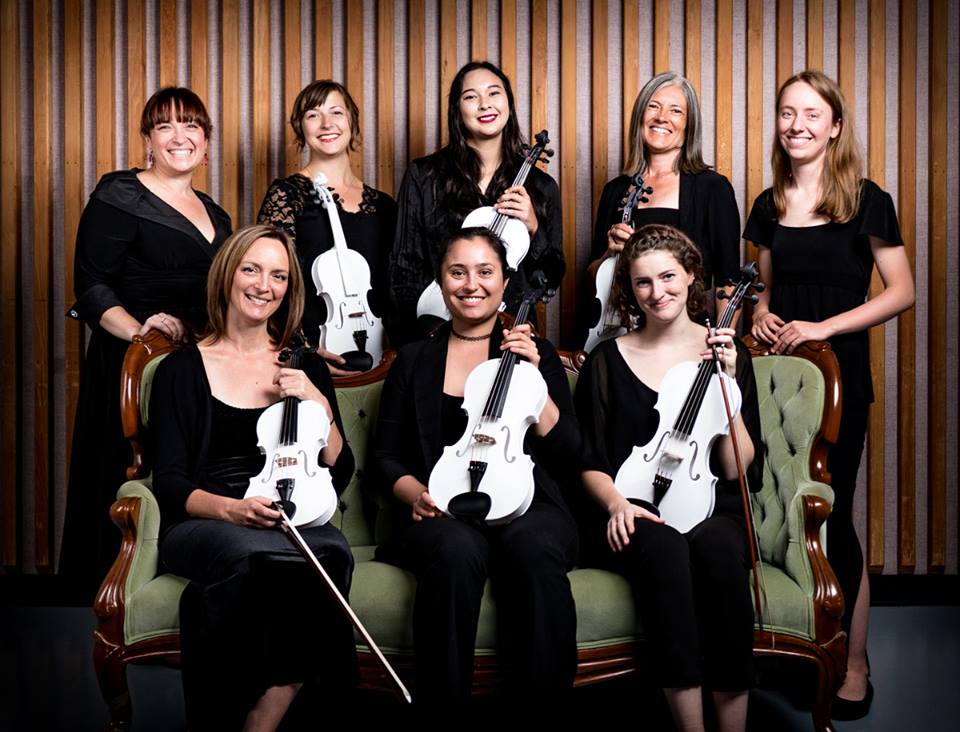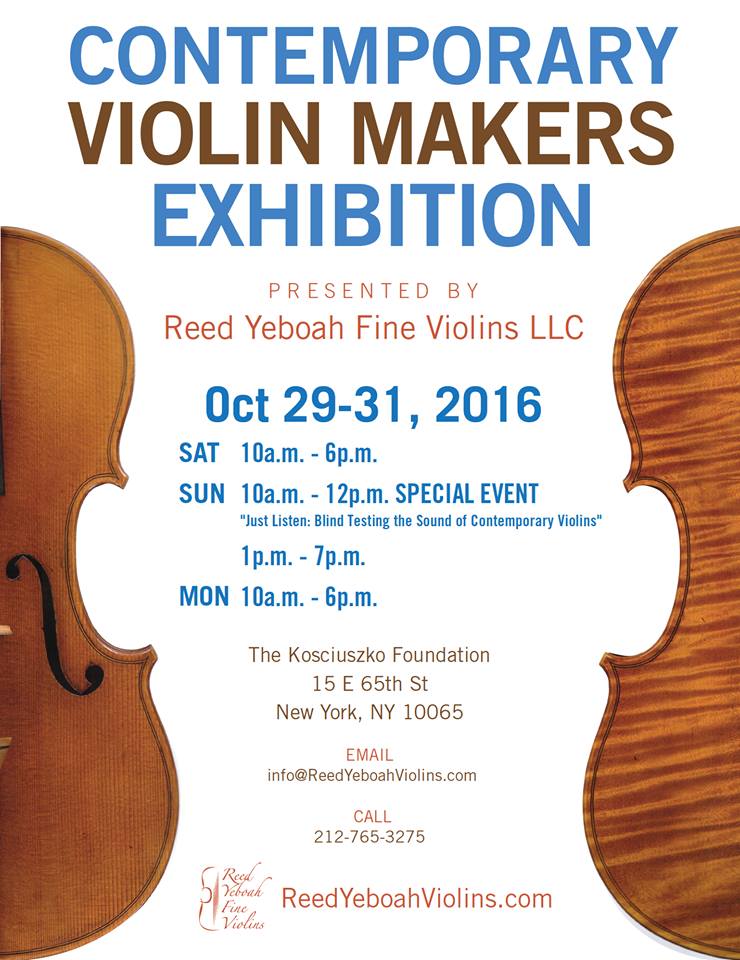2018 has ended and it has been quite a busy one! Among other things, I’ve been taking part in the 3D StringTheory Project presented by the Ottawa Symphony Orchestra last November. This multidisciplinary project involved the conception and production of a 3D printed ‘’da braccio’’ octet as well as the composition of a musical piece for the resulting instruments.
With the help of digital designer Laurent Lacombe (Co-founder of Creadditive, Québec City), we adapted the model resulting from a CT scan of a Dequincey violin that I provided for reference. We worked as well with Myron Semegen (Industrial Technology Centre, Winnipeg) to have a better understanding of the thermoplastic materials and printing options available at the Centre.

Photography: Ch. Dequincey (All rights reserved)
The focus of our team was to make instruments as light as possible while still being able to withstand the string tension. For the musicians, they had to be pleasant to hold and play, and capable of producing the most agreeable sounds possible. The main challenge was dealing with the printing materials which had properties almost opposite to wood in terms of stiffness and density.
At the beginning we weren’t sure what to expect. However, if people had managed to perform popular music on wood shoe-violins, do-it-yourself violins and cellos in the trenches during the First World War, or on repurposed trash as depicted in a recent documentary (http://www.landfillharmonicmovie.com/), I thought it should be possible to build an instrument with which one could play music.

From my curious and experimentalist perspective, it was quite interesting to go through the experimentation process of adjusting my experience with wood to aim for as good an end result as possible, within the time constraints. I wish that we had had a bit more time to explore a few more ideas.
The final instruments are heavier than traditional violins and violas. They also required a fair amount of finishing by hand before the set up and sound adjustments. It appears to me that the sound produced by the instruments seems to be perceived more loudly by the player than it effectively projects in a larger space, probably due to properties of the material using a traditional violin shape. If this defeats the goal of big scale performances it might be advantageous for other purposes. However, on the day of the performance the instruments had to be amplified so as not to be overtaken by the orchestra.

Natalie Deschesnes, Marlena Pellegrino, Alisa Klebanov
Photography courtesy of the Ottawa Symphony Orchestra
Before doing some final adjustments on the instruments, I was able to hear one of the last rehearsals of the octet. I very much enjoyed witnessing the eight musicians and composer Harry Stafylakis working together on the textures that the instruments could bring to the piece. I couldn’t help being amazed by the overall final results in tone which were well beyond my expectations.
This experience increased my understanding of the current possibilities and limitations of CAT scanning, 3D software and 3D printing. These technologies have the potential to be useful in several areas of my profession such as the restoration and study of historical instruments.

Photography Ch, Dequincey (All rights reserved)
As for the future of 3D printing in general, I can’t help but be concerned by the environmental costs of producing, recycling and disposing of the thermoplastic materials used. Also, in a world where obsolescence is frighteningly setting in as a norm, one might want to consider the durability of these materials and the ease/safety of repairs to extend the lifetime of a finished object.
Working with these synthetic materials increased my appreciation for the versatility of wood, and I contemplate the utopian vision of forest’s sustainability, slow growth, preservation of diversity resulting in better quality and choice of wood, both for instruments and other uses. I fear that climate change, among other challenges, will make it difficult to go in this direction.
Also, as we already know, ebony is another problematic wood not only because of its scarcity, but also because of the decreasing quality, due to various exploitative abuses of forests. I looked for new options for fingerboards and was able to identify new composite alternatives, already in production, available for violin fingerboards. These fingerboards look similar to ebony and are easy to work with. The composite material is more durable than ebony and resists normal wear. This would decrease the need for the fingerboard planing, which is a financial incentive for musicians. At the time of writing there are a few other options available. I’ll try to write about this in a future blog post.
I would like to thank the Ottawa Symphony Orchestra for facilitating this project, specifically Angela Schleihauf our project coordinator, the Canada Council for the arts for their financial support, as well as ITC and Creadditive.
For those wishing to know more about the full process here are a few links to a series of short videos made during the project:
Copyrights © 2019-2021 Charline Dequincey. All rights reserved.


